For myself, there are two parts to dealing with recoil, the set up of the rifle and how you use that rifle… This page is all about how I deal with recoil on my rifles from the mechanical side of things or what some might call the set up. But it’s important to remember that the mechanical set up will only take you so far, the rest is up to you.

Stock Design
Time to blow your mind… rifles only recoil upwards because of shitty stock design. Yes. Just about every off the shelf bolt rifle sold comes with a drop comb stock, the heart and sole of muzzle rise during recoil.
Do you ever ask yourself why? My thoughts on the matter focus on sights. Back in the day the only option was iron sights, so to get your face down to where you could see the sights the buttstock had to get out of the way. Only solution was pretty much the drop comb stock.
Muzzle Rise
A traditional rifle stock creates a simple physics problem. What happens when the rifle is fired? When held to your shoulder and fired, the rifle barrel moves up during recoil. But this has nothing to do with caliber, bullet size or powder charge. It comes entirely from the physical design of the stock and how that stock interacts with the guy behind the trigger.
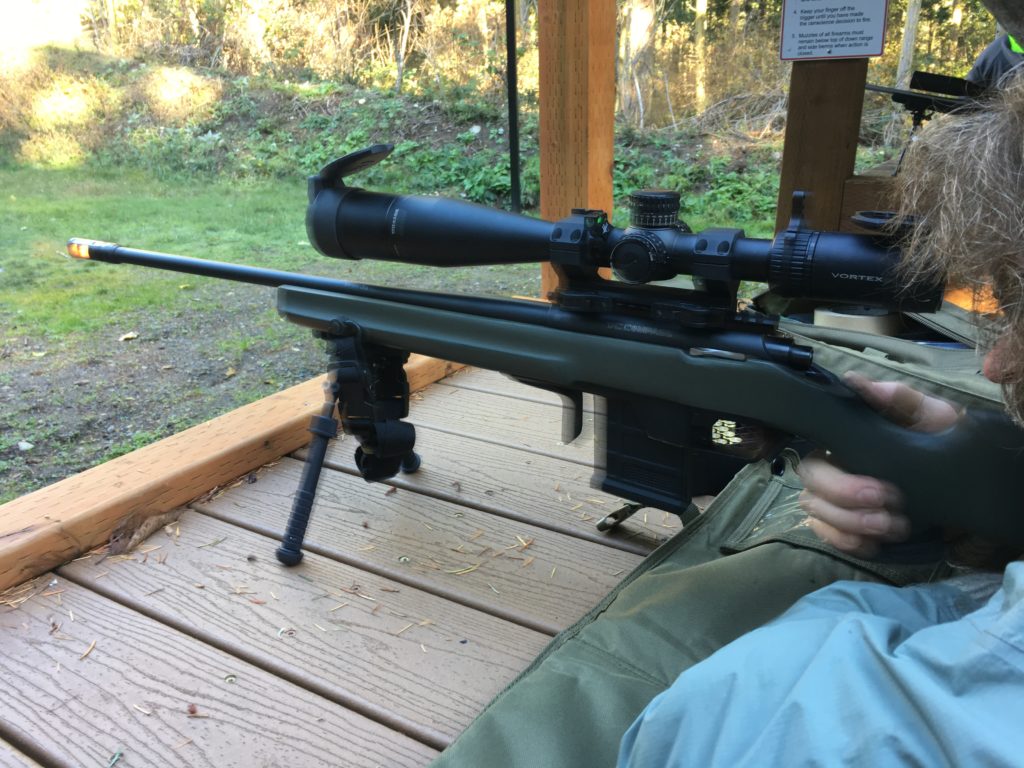
When a rifle is fired, all of the energy of recoil is focused directly in line with the bore. But what happens to that energy once it moves through the stock and finally to you and we find the weakest link. And no it’s not you, rather it is the location of the buttstock. The farther away that buttsock is from that centerline of force, the more leverage it has to allow the barrel to take the path of least resistance, up…
Muzzle flip/rise in a pistol is a dramatic example of what is happening during recoil. The muzzle flips up due to the location of your hands. They are not behind the bore but way below it. Same thing occurs with your rifle. Your hands and shoulder are below the forces coming from the barrel so you get muzzle rise as you counteract the recoil
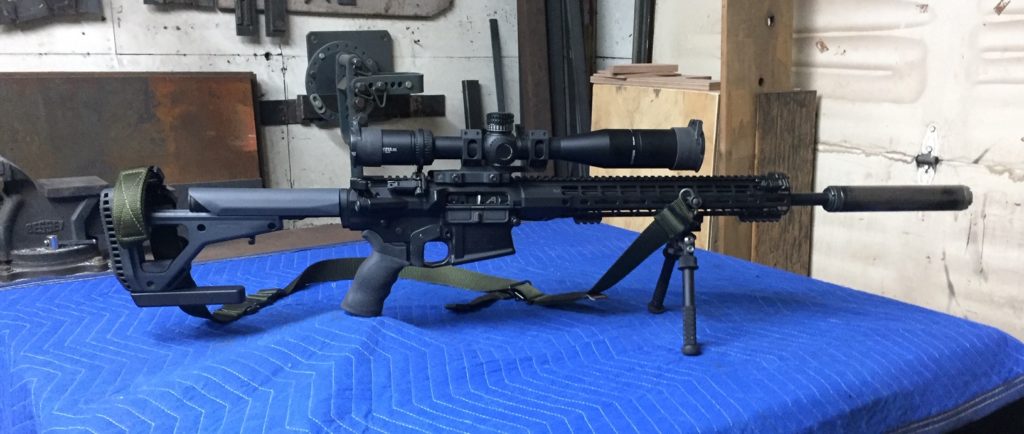
Not suggesting you do such a thing but if you turned your rifle upside down and fired it which way do you think the barrel would move? Instead of muzzle rise you would get the opposite. This occurs simply because of the location of the buttstock relative to the forces of recoil coming from the barrel.
Physically you cannot line yourself up with the bore of the barrel on a traditional drop comb stock. You are off center from the actual forces occurring during recoil.
Riding the Recoil
Now that you understand why the muzzle rises, you also need to know that this movement in a few select instances is not a bad thing. Large caliber pistols and big bore rifles used off hand need that muzzle rise to assist with how those guns are used. A large bore pistol that hit straight back just might break your wrist and a large bore rifle just might knock you on your ass fired off hand.
Options….
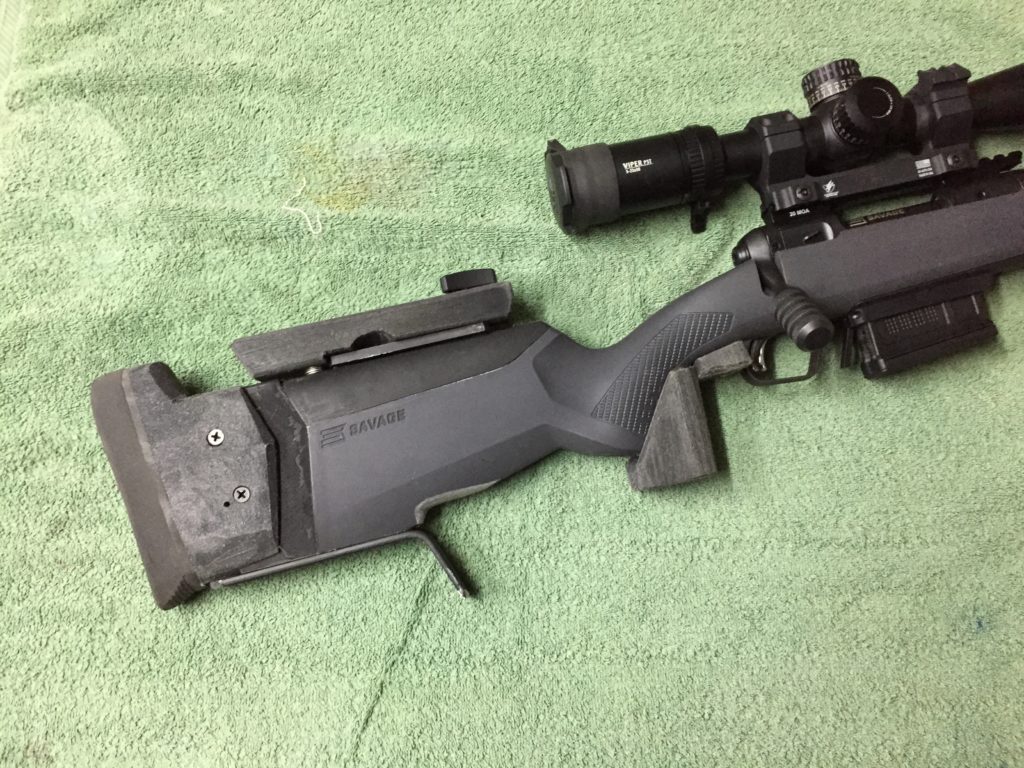
The simple solution to eliminating muzzle rise isn’t a fancy brake on the barrel which really does not solve the problem and refocuses the noise back at you. (I use muzzle brakes for other reasons…) The solution lies in the location of the butt stock. Move that buttstock more in line with the bore and there goes your muzzle rise.
Eugene Stoner, the father of the AR 15, figured this out more than 50 years ago. The stock on an AR 10 (which he designed before the 15) was placed in line with the barrel not only as a place for the bolt to go as it cycled but also to assist with recoil management. I am pretty sure that the unmanageability of an M-14 on full auto was a motivating factor for his design….
Todays Chassis builders have also figured this out. Moving the buttstock in line with the bore will prevent muzzle rise during recoil…
Modifying a Wood Stock
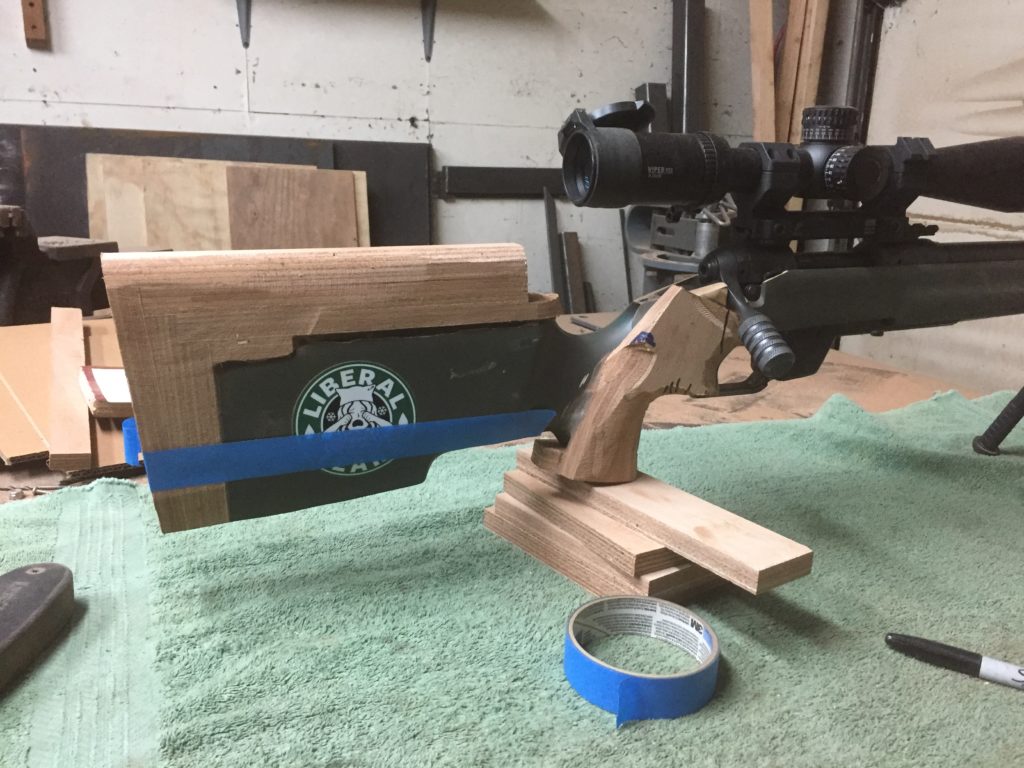
Wood stocks can also play a part in assisting with felt recoil. They do tend to feel a bit softer to shoot than a chassis and on a minute level softer than a rigid fiberglass or plastic stock. And remember feel is an important factor when using your rifles….
Stepping out of the box allowed me to make changes to the stock on my Savage 110 Tactical. And totally fitting the stock to my shape and size makes the rifle a joy to shoot. It’s like putting on a favorite glove. You can also see the mods I made to the grip…

As you may be able to tell in the picture, the butt stock and cheek riser sit about an inch above the center line of the bore on my rifle. Looks out of the norm for sure but works great in practice.
Brakes
There is much more to brakes than making your gun louder and pissing people off that shoot next to you.

Stock design will handle muzzle rise but it does little to mitigate felt recoil. This is where brakes can actually help. But it has to be a good brake. Some brakes just makes things louder. Another point in fact, brakes do not make your gun louder, they simply redirect the sound…. right back at you.
For myself the main purpose is to assist me with keeping my rifle on target after it fires. Especially for long range. Minute movement at the rifle translates to significant movement down range when viewed through your scope.
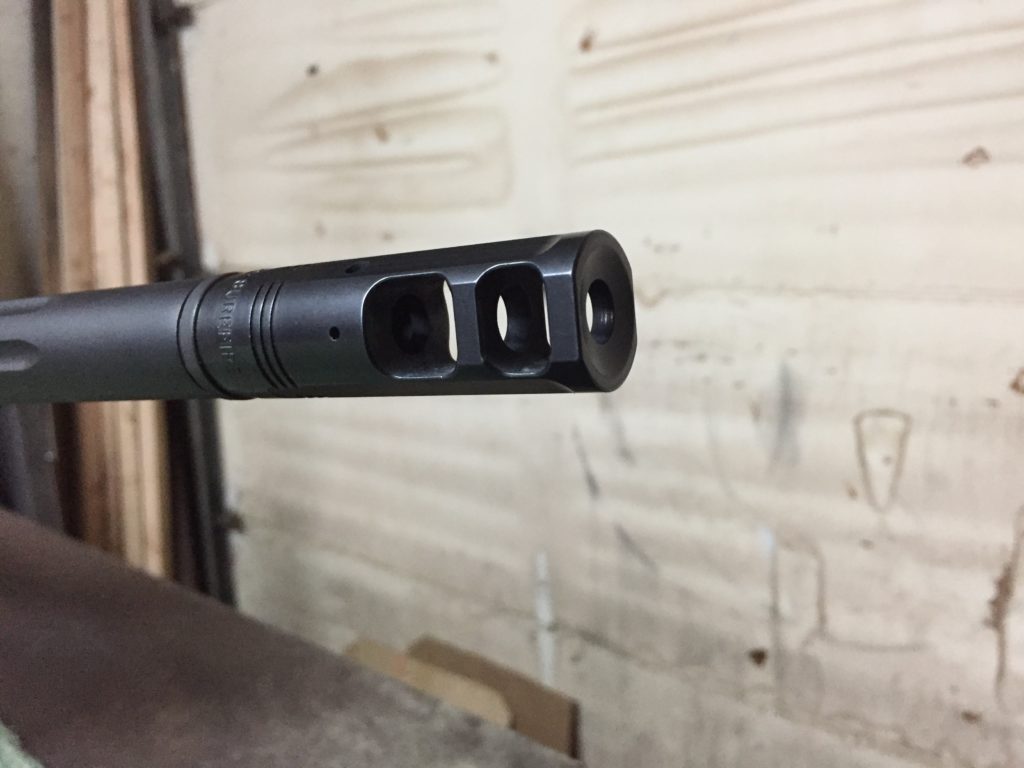
For the most part avoid any brake that directs gas upward and definitely not downwards. I really like the brakes made by Area 419 and for a cheap effective brake Surefire has one that is very efficient even though it has some small ports that point upwards.
Suppressors
Some might call them the penultimate recoil mitigation device. Plus they have the added bonus of reducing the decibels coming from your rifle. Lucky for me I live in a state where they are still legal.
Couple of negatives to a suppressor, main one being expensive. I got around this by building my own after applying for and receiving my tax stamp from the ATF. Still had the same wait time to make it legal though. This is whats known as a Form 1 suppressor.

They also can have an impact on accuracy. And the accuracy can be effected in a couple of ways. It’s possible the design of the suppressor will have an adverse effect on the bullet while still inside the suppressor but the main issue is how it effects the harmonics of your barrel. Hang that weight on a thinner barrel and all sorts of things happen, some not for the better. A point of impact shift to your zero is the most common.
But the best feature in my book is how much it manages the gas coming out of the barrel. By slowing down the gas from the burning powder it drastically alters the recoil impulse.
Some longer barrels (and definitely light sporter barrels) may not get along with suppressors. Mostly due to the weight hanging out on the end. This is why my suppressor has been relegated to the much shorter (but very heavy barrel) of my large frame AR. Just wasn’t happy with the accuracy when installed on my 24″ Savage but it seems to have no ill effect on the 18″ AR. And both are 308’s…
